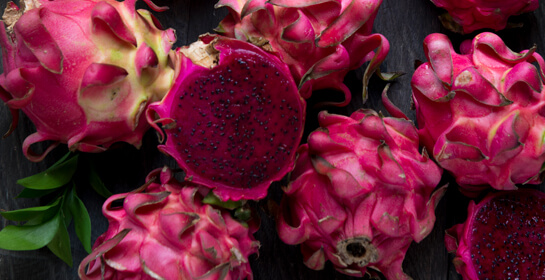Create product appeal with exotic fruits
It’s long been said that we are what we eat and never has there been more opportunity in today’s culture for food to serve as a statement piece. Striking flavor profiles and ingredients have become cult-like symbols and ethnic foods are on the rise. According to Statista, the ethnic food category is projected to grow from $11 billion in 2013 to $12.5 billion in 2018.
One area experts continue to see a spike in growth is exotic fruits. According to FAO, tropical fruits are increasingly stars in global trade, with export volumes of mango, pineapple, avocado and papayas on course to bring in a combined value of $10 billion in 2017.
One fruit that continues to gain momentum among adventurous consumers and culinary enthusiasts is dragon fruit. Also known as pitaya, dragon fruit is native to South America, Central America and Mexico and is also grown in Asian regions. It is expected to be one of the top produce items for the upcoming Chinese New Year.
Another trending fruit winning consumers over is rambutan. Native to tropical Southeast Asia, rambutan is very closely related to the lychee. It’s easy to be intimidated when first looking at rambutan. “Rambut” is Malay for “hair” and the outside can be described as awkward and hairy, but the tender fruit inside has a sweet flavor that once tasted, is desired again.
While these and other exotic fruits are delicious by themselves, oftentimes they are more successful when used in a flavor hybrid. Exotic fruits in combination with fruits consumers are already familiar with are an easy way of introducing them to something new. Combinations such as starfruit and kiwi or mangosteen and strawberry allow for products to have a large appeal with a global spin.
